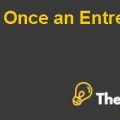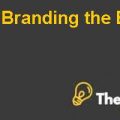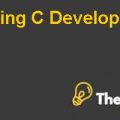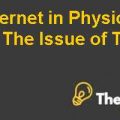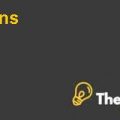
Introduction
As Microsoft wanted to increase its engagement with the college students, it decided to develop a team of experts, examining the situation and to provide recommendations. Microsoft did not just wanted to understand the marketing techniques that would be feasible to attract college students, but they wanted to understand the mindset of a college student. The aim of the team experts was to identify the student’s interaction regarding technology, the factors that contribute towards the use of a particular technology, Microsoft’s value proposition in the mind of a college student, and the marketing techniques used by its competitors. Microsoft adopted to conduct ethnographic research to understand the target groups’ perception and behaviors to answer the goals of a team. The ethnographic research was based on diaries, focus groups, and face to face interviews.
The paper attempts to describe the evaluation of the tools which were chosen by the team in understanding college students’ behaviors and provides recommendations on other criteria that could be helpful in using those tools. The paper also discusses the difference between a freshman, sophomore, and a junior student and the activities that occupies them the most. Lastly, the paper provides a brief summary of the case analysis.
Evaluation of the Tools Chosen by the Team
The tools that were chosen by the team helped the company in identifying the behaviors and the approach of students towards a technological product. The research had been carried out through ethnographical school of thought. There were four types of research which were conducted to understand the college students’ behaviors. The first research method was based on twitter diaries in which the researcher would understand the patterns, behaviors of college students, and then the team could provide recommendations to the company. The particular research method of Twitter diary is effective form of research in which a company can understand the daily routine of its potential buyers or subjects through every 30 minutes twitter updates from the subjects. The basic purpose for twitter diary was to understand the social/personal life, and their studies. However, the particular research method carried a disadvantage in which the time is either overestimated or underestimated for each theme by subjects. However, a limitation for 30 minutes update cleverly restricts such actions.
The other research method was technological diary which was sub-divided in to two categories namely phone time and online time. The phone time was again divided into phone, text, and others, whereas, the online time is further divided into School, Facebook, Google, and others. This particular tool was cleverly devised but it lacked certain abilities that could not reveal the personal issues of an individual which had limitations. Perhaps, this research tool could have been improved in receiving near perfect and real responses. The third tool that was applied by the team includes focus groups to understand the perception of college students towards different competitors of Microsoft. A major advantage that could be perceived through the focus group is the joint conversation where idea flows rapidly because of many diverse people with different mindset. It is the most impressive tool applied by the team of experts in identifying the perceptions of its competitors from college students.
While considering the last tool applied by the team for face to face interviews can be considered as a good option in most cases, but in the particular case it is not much effective as college students were reluctant to share much of their personal life through face to face interviews. Sharing personal or family issues can be expressed through writing or in words, but it is difficult for the college students to share it face to face.
Recommend the Criteria for Using the Tool
The criteria that have been used by the team of experts is complicated and contains many flaws amongst which choosing a very small sample size to represent the entire population was a major flaw in selecting subjects. While considering the selection criteria for twitter diary, it was important for students to have twitter account activated and nothing more to be required. Considering a very selective subject resulted in a small sample size for Microsoft. Similarly, according to the selection of subjects for technological diaries, it was only necessary for subjects to have at least little knowledge of technological products and nothing else. Microsoft increased its specifications for selecting subjects due to which the company lost many potential subjects. In the third selection criteria for focus groups, the company did well in designing the research method, but again the sample was too small for the data to be significant. The particular selection criteria would have allowed many subject to volunteer for this research method as it does not require any expertise, neither does it require any technological gadgets. The last selection criteria for face to face interviews would not have been effective because many freshman and sophomore students are shy and feels unpleasant to share personal information face to face.....................
This is just a sample partial case solution. Please place the order on the website to order your own originally done case solution.
Microsoft Office is faced with a difficult task to attract students of the student community. Engaging the audience the most tech-savvy generation is constantly critical to the future franchise Microsoft Office. Microsoft past advertising efforts to reach this audience was lackluster, and its major competitors have been gradually established themselves among this demographic. Microsoft task is to determine the best tactics that can successfully communicate with this audience. (A) case describes the dilemma of Microsoft and briefly describes what students care about most: managing homework, creating a great-looking school, on the job training, and cooperation with friends and classmates. It also provides information on competitors, primarily by increased presence of Google in universities and its focus on the higher education market and the growing influence of Facebook among students and its evolution in productivity tool. (B) case describes qualitative research tools that Microsoft used to get a better understanding of the students: the day diaries using Twitter, blogs technology with the Internet and smart phones, focus groups and one-on-one interviews with students. The case helps students understand the value of ethnographic and qualitative research methods, to draw conclusions from the data, and then make recommendations. This shows how ethnographic research and observation enrich research, creating a deeper understanding of the consumer, compared to traditional methods. "Hide
Mohanbir by Sony, Ashuma Ahluwalia, Julia Gab, Kevin Gardiner, Alan Huang, Amit Patel, Pallavi Goodman Source: Kellogg School Management 28 pages. Publication Date: May 20, 2012. Prod. #: KEL655-PDF-ENG

